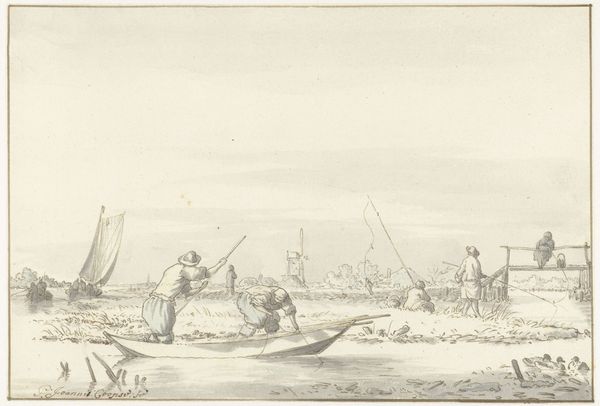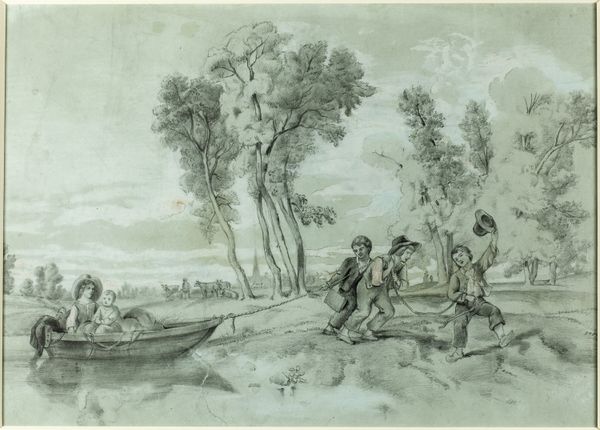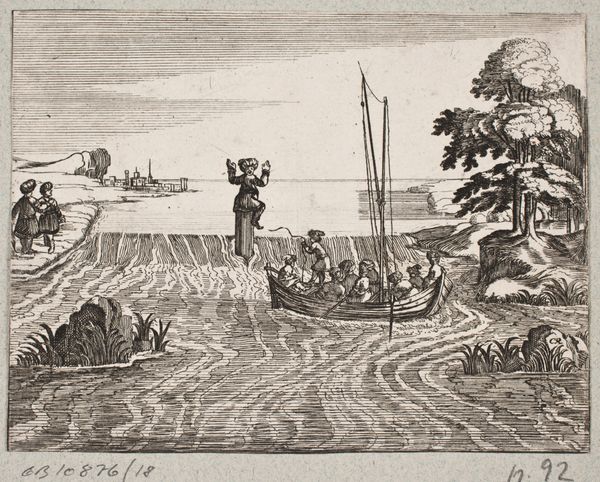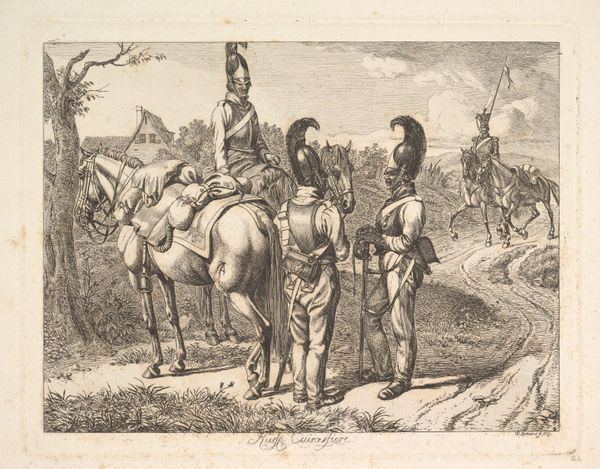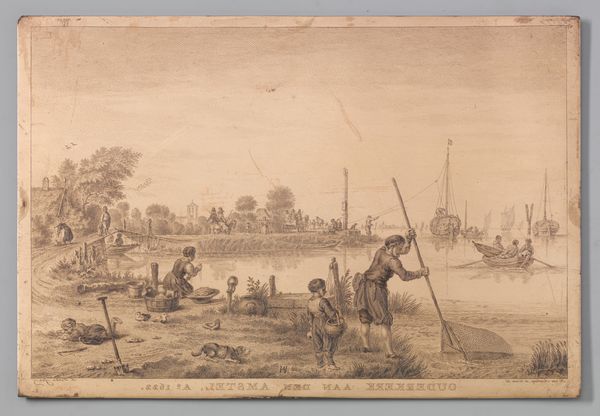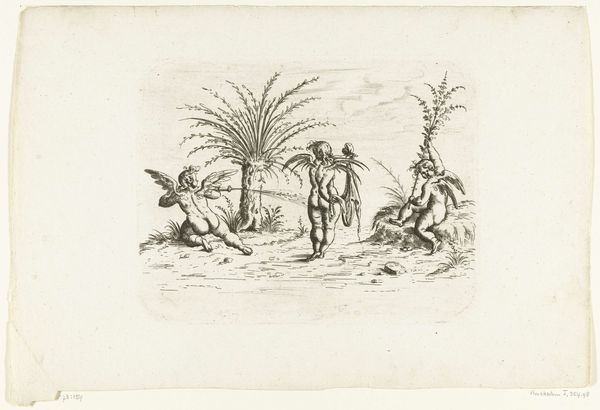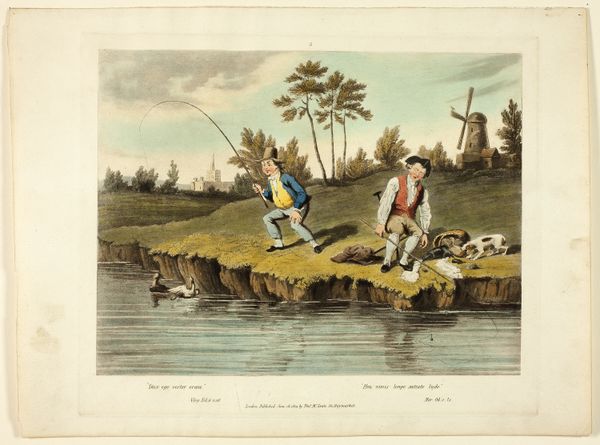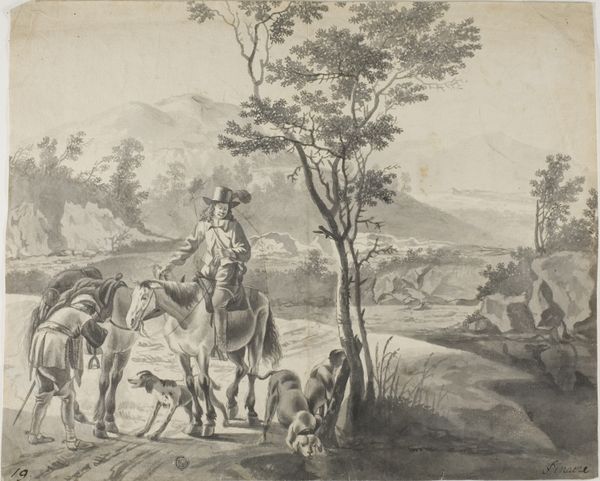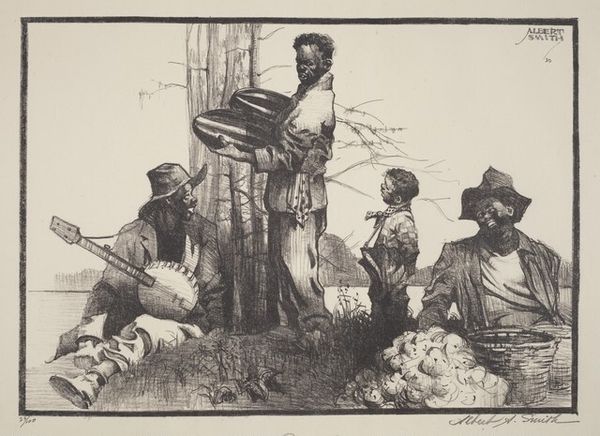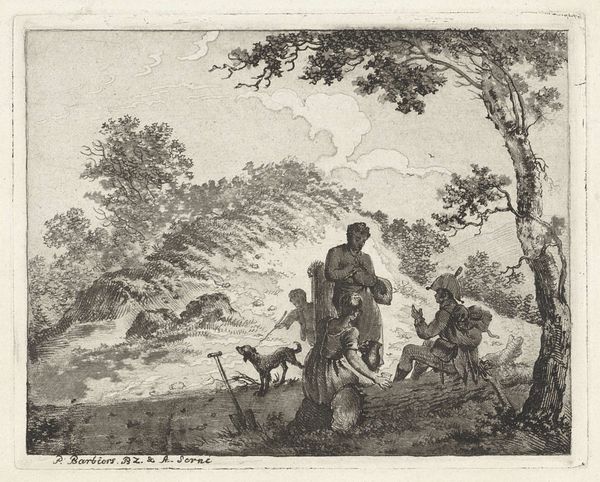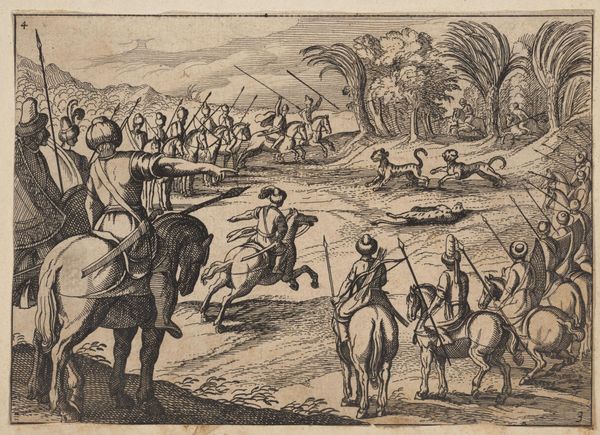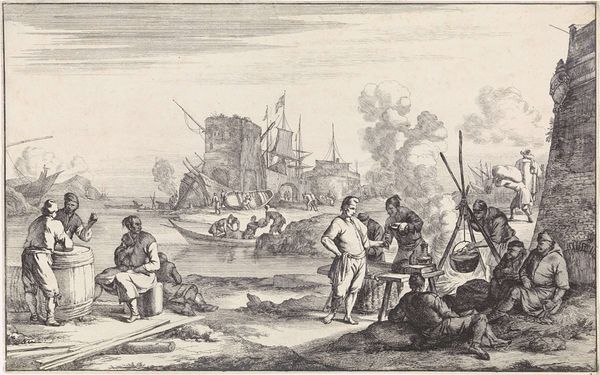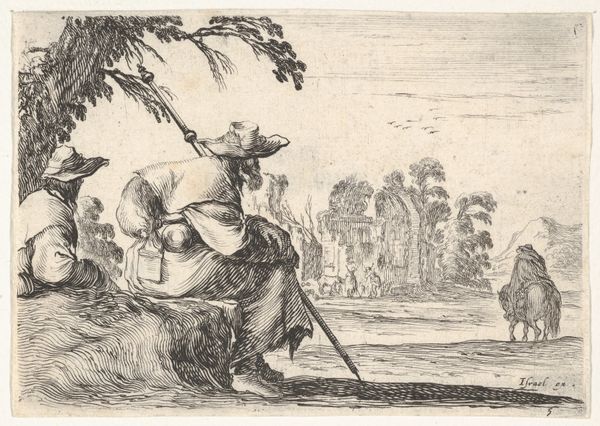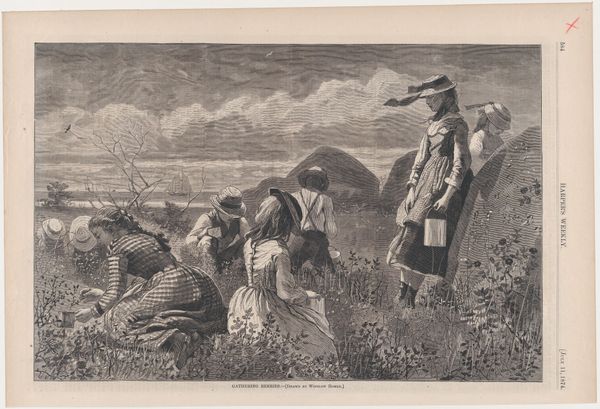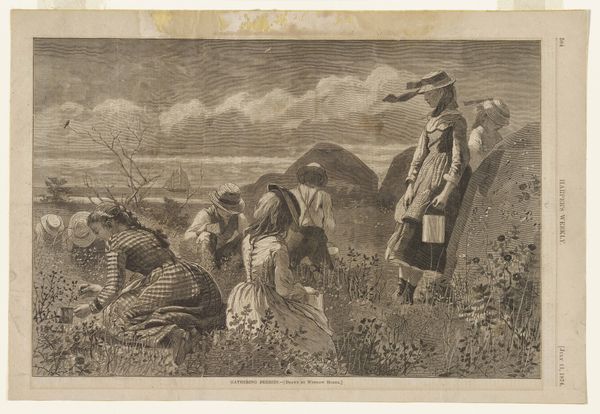
painting, plein-air, oil-paint
#
narrative-art
#
painting
#
plein-air
#
oil-paint
#
landscape
#
figuration
#
oil painting
#
romanticism
#
history-painting
#
academic-art
#
realism
Dimensions: overall: 45 x 60 cm (17 11/16 x 23 5/8 in.)
Copyright: National Gallery of Art: CC0 1.0
Edward Hicks, likely in the first half of the nineteenth century, painted "The Landing of Columbus", an oil on canvas work. A light blue-ish sky dominates the top half of the image, whilst below a scene unfolds depicting the arrival of Columbus and his entourage to a new land. The composition is carefully structured, with a contrast between the darker, detailed foreground and the lighter, more atmospheric background. Hicks employs a rather primitive style, particularly in the rendering of figures and forms. Columbus, standing tall, becomes a focal point, his figure sharply delineated against the softer lines of the landscape. The artist's use of linear perspective creates a sense of depth. At the same time, the flat application of paint flattens the image, resulting in a tension between illusionistic space and surface. What meanings does this intersection of history and artistry present? It invites us to question the nature of representation, the construction of historical narratives, and the complex relationship between form and content.
Comments
No comments
Be the first to comment and join the conversation on the ultimate creative platform.
